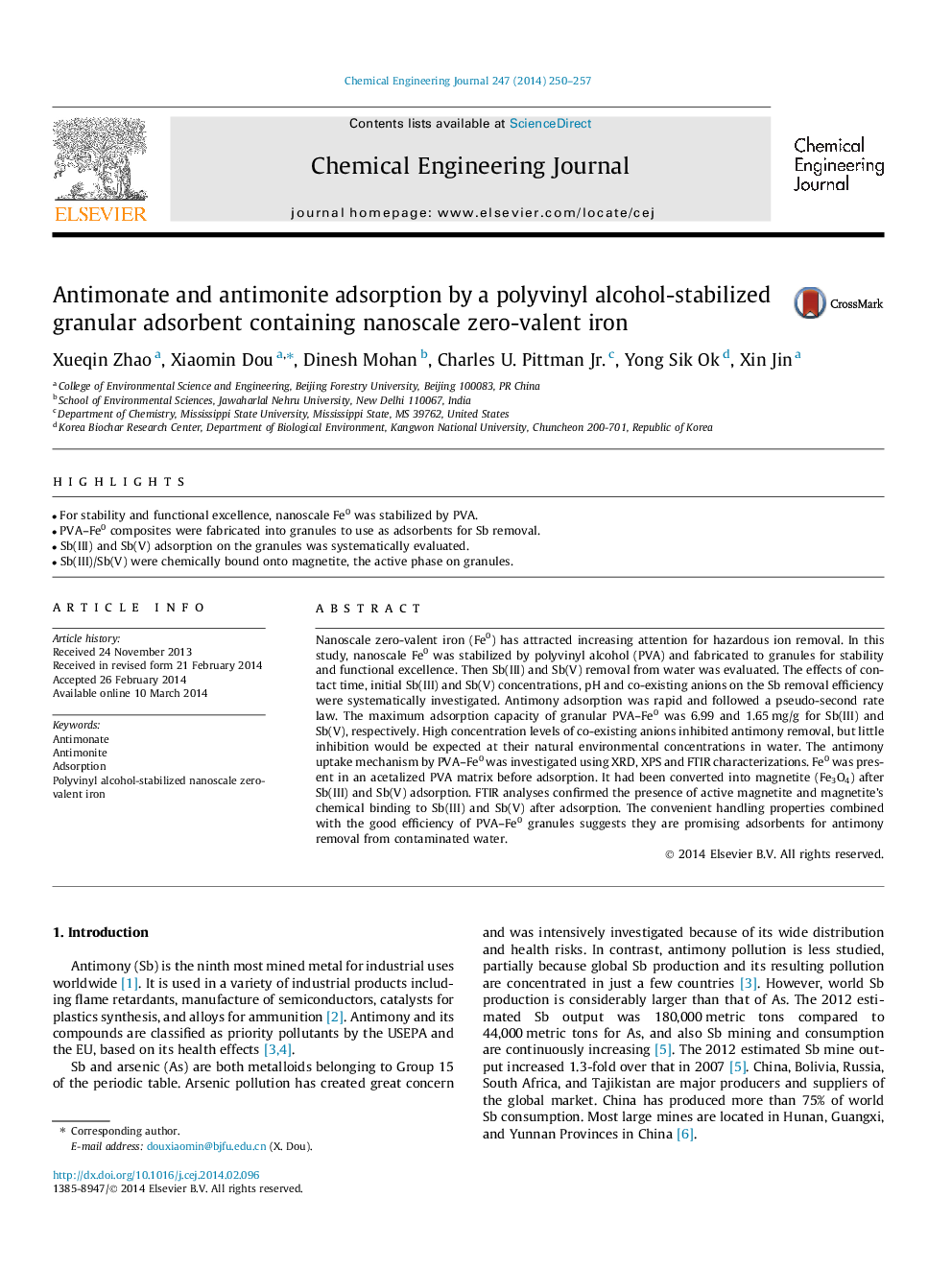| Article ID | Journal | Published Year | Pages | File Type |
|---|---|---|---|---|
| 147537 | Chemical Engineering Journal | 2014 | 8 Pages |
•For stability and functional excellence, nanoscale Fe0 was stabilized by PVA.•PVA–Fe0 composites were fabricated into granules to use as adsorbents for Sb removal.•Sb(III) and Sb(V) adsorption on the granules was systematically evaluated.•Sb(III)/Sb(V) were chemically bound onto magnetite, the active phase on granules.
Nanoscale zero-valent iron (Fe0) has attracted increasing attention for hazardous ion removal. In this study, nanoscale Fe0 was stabilized by polyvinyl alcohol (PVA) and fabricated to granules for stability and functional excellence. Then Sb(III) and Sb(V) removal from water was evaluated. The effects of contact time, initial Sb(III) and Sb(V) concentrations, pH and co-existing anions on the Sb removal efficiency were systematically investigated. Antimony adsorption was rapid and followed a pseudo-second rate law. The maximum adsorption capacity of granular PVA–Fe0 was 6.99 and 1.65 mg/g for Sb(III) and Sb(V), respectively. High concentration levels of co-existing anions inhibited antimony removal, but little inhibition would be expected at their natural environmental concentrations in water. The antimony uptake mechanism by PVA–Fe0 was investigated using XRD, XPS and FTIR characterizations. Fe0 was present in an acetalized PVA matrix before adsorption. It had been converted into magnetite (Fe3O4) after Sb(III) and Sb(V) adsorption. FTIR analyses confirmed the presence of active magnetite and magnetite’s chemical binding to Sb(III) and Sb(V) after adsorption. The convenient handling properties combined with the good efficiency of PVA–Fe0 granules suggests they are promising adsorbents for antimony removal from contaminated water.
